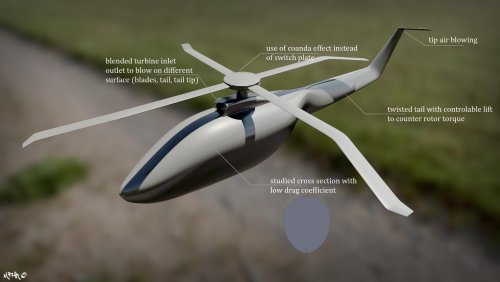lippischh
ACCESS: Secret
hi folks, i wanted to present you some ideas of mine concerning rotorcrafts and it would be here, well i will use a helicopter model to illustrate the features im talking about.
Lets start by the fact that helicopter fuselage cross section affects on its performance cause the rotor is blowing on it, most helicopters have round or even rectangular cross sections which are not very suitable aerodynamically so i propose to use a streamlined cross section.
we could also use the rotor downward flow to counter torque and that is possible by different ways, using aerodynamic surfaces that creates horizontal counter facing force or using the tail as a vertical wing. those ways can be improved by using tip compressed air blowing, air that come from the turbines themselves.
you guys C&C are very welcome and very important so feel free to leave your impressions.
Lets start by the fact that helicopter fuselage cross section affects on its performance cause the rotor is blowing on it, most helicopters have round or even rectangular cross sections which are not very suitable aerodynamically so i propose to use a streamlined cross section.
we could also use the rotor downward flow to counter torque and that is possible by different ways, using aerodynamic surfaces that creates horizontal counter facing force or using the tail as a vertical wing. those ways can be improved by using tip compressed air blowing, air that come from the turbines themselves.
you guys C&C are very welcome and very important so feel free to leave your impressions.

